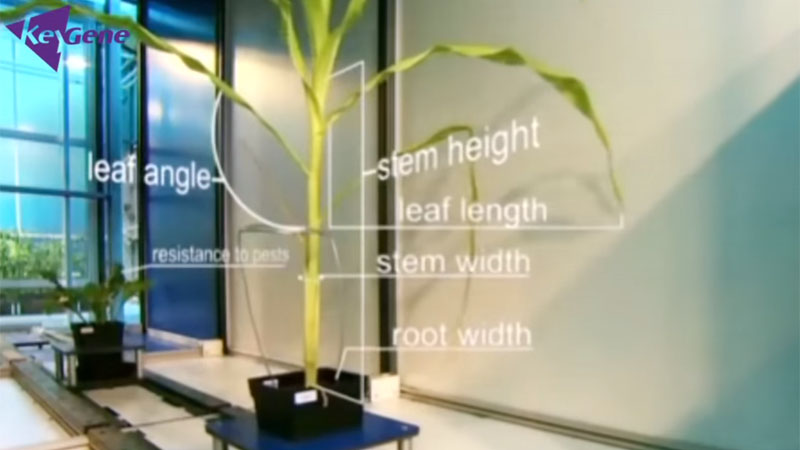
Digital Phenotyping
PhenoFab® greenhouse service operation combining high-throughput, non-invasive technology with trait interpretation to exploit phenotypic variation.
In the plant breeding and crop protection industry phenotyping is one of the most crucial aspects of product development. It requires significant experiences by breeders or agronomists and even then objective and robust phenotyping in a high throughput manner is a great challenge. Digital phenotyping offers a solution for this. The digital images are analyzed with algorithms which ensures robust and reliable output. KeyGene offers PhenoFab®: a greenhouse service operation that combines high-throughput, non-invasive technology with trait interpretation to exploit phenotypic variation.
PhenoFab®
This service technique has already been implemented in the company’s greenhouses for several years. Phenotyping is performed by cameras and a conveyor belt transports plants through different scanning areas. The capacity: 1.400 plants, which can be automatically monitored day and night. The plants are subjected to conditions that mimic those found in the fields where they will be grown by KeyGene’s clients, with the same watering conditions, sun exposure, temperature and soil type. The company’s researchers are then able to compare the results obtained with the genetic profile of the plant, making it possible to investigate characteristics such as colour, architecture, leaf-shape and water content. KeyGene engineers are the first in Europe to offer this service to their customers all over the world. Read more in this PhenoFab brochure .
Seed treatments, a showcase in sugar beet
Sugar beet production can be heavily impacted by infection with Rhizoctonia solani, a fungus in the soil that can affect production and quality. Seed treatments can be an effective solution, but evaluation of these products is time consuming and challenging. Particular as field trials take a full season, and are prone to spatial differences, seasonal influences and artificially high infection levels. A recent project showed that PhenoFab offers a solution to all these problems. Plant conditions and R. solani infection were initiated and monitored at individual plant level. The results showed the initial seed performance during germination, mortality of seedlings, and the performance of the surviving seedlings in terms of size, plant color and roots. As the results are much earlier available than traditional field trails, customers can directly use the data for selection purposes, optimalisation of products, or in their marketing.
Show case: PhenoFab confirms physiological effect seed treatment Syngenta

